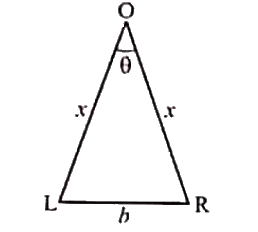What do you understand by the terms 'node' and 'antinode ' ? Solution in Telugu
Node :The points at which the amplitude is zero, are called nodes.
Antinodes: The points at which the amplitude is maximum, are called antinodes.
Topper's Solved these Questions
- WAVESBOOK - VIKRAM PUBLICATION ( ANDHRA PUBLICATION)CHAPTER - WAVESEXERCISE - SHORT ANSWER QUESTIONS
11 Videos
- WAVESBOOK - VIKRAM PUBLICATION ( ANDHRA PUBLICATION)CHAPTER - WAVESEXERCISE - LONG ANSWER QUESTIONS
6 Videos
- WAVESBOOK - VIKRAM PUBLICATION ( ANDHRA PUBLICATION)CHAPTER - WAVESEXERCISE - PROBLEMS
10 Videos
- WAVE OPTICS BOOK - VIKRAM PUBLICATION ( ANDHRA PUBLICATION)CHAPTER - WAVE OPTICS EXERCISE - Problems
6 Videos
Similar Questions
What are transverse waves? Give illustrative examples of such waves.
View SolutionExplain the formation of stationary waves in stretched strings and hence deduce the laws of transverse wave in stretched strings.
View SolutionA stretched wireof length 0.6m is observed to vibrate with a frequency of 30 Hz in the fundamental mode. If the string has a linear massof 0.05 kg/m. Find (a) the velocity of propagation of transverse wave in the string (b) the tension in the string.
View SolutionWhat spped should a galaxy move with respect to us so that the sodim line at 589.0nm is observed at 589.6nm?
View SolutionWhat do you understand by the terms"
View SolutionWhat do you understand by the term Adsorption.
View SolutionWhat do you understand by the terms:
'syngas'
View SolutionWhat do you understand by the term 'hydrogen economy'?
View SolutionWhat do you understand by the term parallax angle ?

View SolutionWhat do you understand by the term longtitudinal growth ?
View SolutionWhat are nodes and antinodes?
View SolutionWhat do you understand by the term electrostatic potential ?
View SolutionWhat do you understand by the term aneuploidy?
View SolutionWhat do you understand by the term 'dendrogram'?
View SolutionWhat do you understand by the term 'intermolecular space?
View Solution
